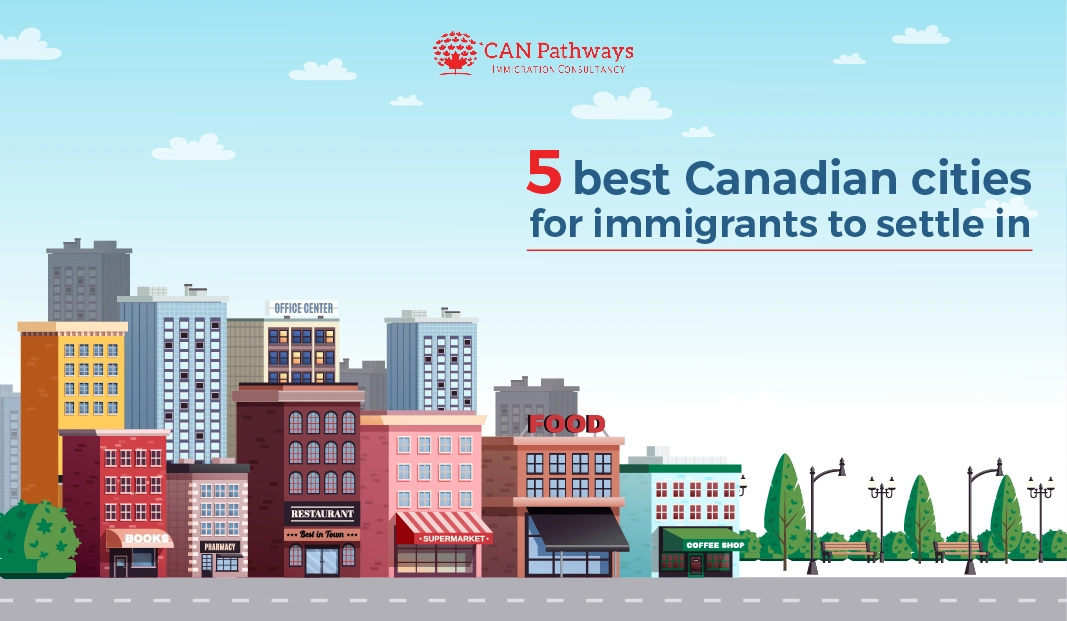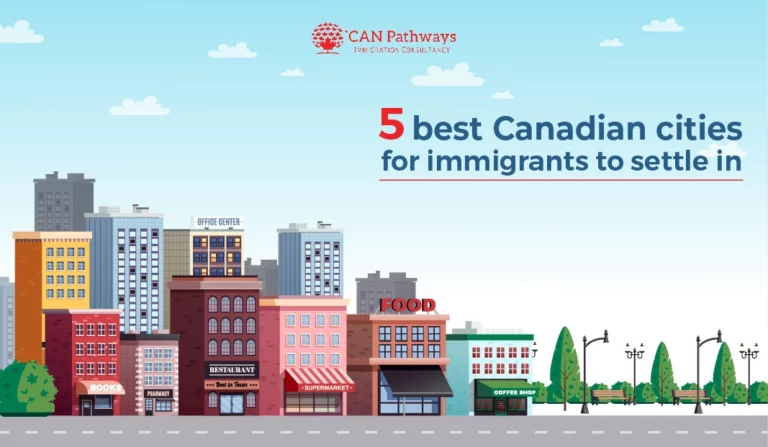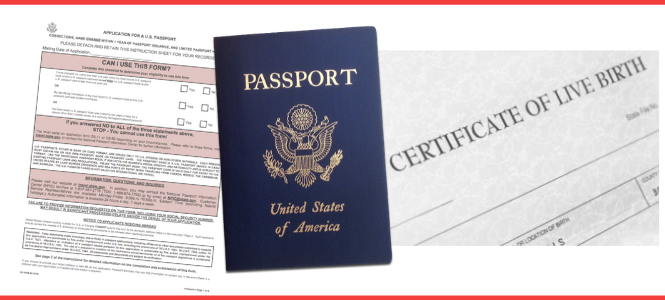10 Best Cities in Canada for Workers and Immigrants
Best Cities in Canada for Job opportunities– you may think that every one of them has the same job market opportunities, but that’s not true at all. Some of these provinces offer more job opportunities than others and can help you start your career off on the right foot if you want to move to Canada from outside the country.
The job market in Canada has slowed down, but it’s still better than in most other countries. Recently, more and more people have been moving to Alberta because the province offers better job opportunities than the rest of the country. But with so many great job opportunities, what are the best provinces in Canada for jobs?
The best provinces in Canada for job opportunities will depend on what you’re looking to get out of your job, but there are always ways to score employment regardless of where you live or work in the country. The best provinces in Canada for job opportunities will depend on what you’re looking to get out of your job, but there are always ways to score employment regardless of where you live or work in the country.
Newfoundland & Labrador
For job seekers who want to be near some of Canada’s most beautiful natural spaces, Newfoundland and Labrador are good choices. One of its biggest employers is Vale, an international mining company that employs approximately 7,000 people in its operations in Long Harbour.
The province also has many call centers, which tend to offer high-paying jobs with flexible hours. It was ranked as one of Canada’s Top 10 Call Centres by The Globe and Mail newspaper in 2012.
However, these positions require employees to have strong English skills; French speakers may struggle to find work here. This can be a challenge if you’re moving from another part of Canada. If you do decide to make your home in Newfoundland and Labrador, make sure you take advantage of local employment opportunities while they last—the region relies heavily on resources like nickel and iron ore, so there are concerns about whether these industries will remain stable over time.
New Brunswick
This is considered one of Atlantic Canada’s most prosperous provinces, and it offers a mix of urban-core business opportunities with rural communities. This makes New Brunswick an ideal province for someone interested in balancing work and nature—and there are plenty of opportunities to do so. The capital city, Fredericton, boasts a booming startup scene that’s been dubbed Silicon Valley North.
Other key cities include Saint John and Moncton. One of New Brunswick’s biggest draws is its education system; among Canadian provinces, it has some of the highest high school graduation rates. And while unemployment in New Brunswick is slightly higher than in other parts of Canada, job growth isn’t slowing down anytime soon. If you want to stay close to home but still explore new frontiers professionally, then you might want to consider New Brunswick as your next destination.
Saskatchewan
With a population of just over 1 million, Sask. isn’t anywhere near as populated as most of its fellow provinces. But that doesn’t mean it doesn’t have big opportunities—particularly in agriculture and mining. The government is also investing heavily in green energy, to produce 50 percent of its electricity from renewable sources by 2030.
READ MORE: 10 Best Immigrant Friendly Cities in Canada for Foreigners
And while there are fewer job opportunities here than in other parts of Canada, they tend to be more lucrative: Saskatchewan has one of the highest minimum wages in all of North America at $10.72 per hour (the national average is $9.15). Plus, residents enjoy low taxes: Saskatchewan has no provincial sales tax or payroll tax, and residents pay an average income tax rate of 5.8 percent (compared to 10 percent federally).
Nova Scotia
Although it’s one of Canada’s smaller provinces, Nova Scotia has a pretty good reputation when it comes to job opportunities. The province boasts an unemployment rate below 6%, and recent immigrants are largely responsible for driving its economy forward. They make up over 33% of Nova Scotia’s population, compared to only 18% across all other provinces. Immigrants also account for more than 50% of business owners in Nova Scotia.
One thing that makes Nova Scotia so attractive is that there is a lot of work available. The province created more jobs than any other Canadian province between 2011 and 2015. The majority of these jobs were created by small businesses, which makes sense considering nearly half (46%) of businesses in Nova Scotia have fewer than four employees.
Manitoba
Although it’s not a province that’s frequently talked about, Manitoba is one of our top picks when it comes to finding a job. Although its GDP has dropped in recent years, that drop was from a high standard. Manitoba’s GDP per capita ranks second among all Canadian provinces. As far as workforce productivity goes, Manitobans are on par with those living in Ontario and British Columbia.
If you want to find work in Canada, look no further than Manitoba. It might be small, but it can hold its own against larger provinces like Alberta and Ontario. Plus, it has some of the lowest costs of living in Canada. That means more money left over after taxes—and more money for saving or spending!
Prince Edward Island
P.E.I. scores high on every metric, especially when it comes to job market momentum and economic stability. P.E.I.’s 2% unemployment rate is not only a full percentage point below that of its fellow Atlantic provinces but also significantly lower than any other province in Canada (which average 5%). The province’s economy is well-diversified, with agriculture playing an important role alongside tourism and manufacturing.
In addition, you can’t beat P.E.I.’s beautiful beaches! And did we mention there are no provincial income taxes? That’s right if you’re looking for a great place to start your career, P.E.I. might be just what you’re looking for. If job security is a big priority for you, or if you’re simply interested in taking advantage of some tax-free earnings.
Then P.E.I. might be worth considering as your next place to live and work. Canada’s second-smallest province (only slightly larger than Ireland), P.E.I.’s population sits at just 152,000 people. This means there are plenty of opportunities to get involved in your community and make friends with your neighbors.
Quebec
Almost 300,000 new jobs were created between 2012 and 2016. That’s 2.6 times as many as in Ontario during that same period. While employment rates across Canada increased by 0.5% annually. They grew by 1% in Quebec every year on average over that period. With low unemployment, rising salaries, and an average weekly wage of $903 (in 2015).
Quebec is attracting a growing number of foreign immigrants who want to take advantage of its economic opportunities. The province also has one of Canada’s highest population growth rates.
READ MORE: Documents Required for Getting Visa to Immigrate to Canada
These factors have helped it become one of Canada’s top destinations for job seekers. In fact, according to Statistics Canada, Quebec experienced net interprovincial migration gains from all other provinces except Newfoundland and Labrador. That means more people are moving there than leaving—an impressive feat given that most Canadian provinces experience net out-migration.
Ontario
With close to 14,000,000 people and almost 1,800,000 businesses, Ontario is known as one of North America’s most populous and prosperous regions. Its many bustling cities include Toronto (Canada’s financial capital), Ottawa (the political capital), and Windsor (one of Canada’s busiest border crossings). The service sector is strong here thanks to a highly educated workforce and easy access to New York City via air travel.
It was also chosen by Forbes as #2 on its list of best places to start a business. Cost of living in The Ontario government offers incentives and programs to encourage new businesses. Including the Business Development Bank of Canada (BDC) Small Business Loan Program; Canadian Youth Business Foundation (CYBF) Startup Assistance Program; Export Development Canada (EDC) Export Voucher Program; Industrial Research Assistance Program (IRAP); and the National Research Council’s Industrial Research Assistance Program (NRC-IRAP).
British Columbia
With an unemployment rate of 5.7% as of February 2018. British Columbia (BC) is one of only three provinces to have below-national-average joblessness. The province’s population is spread out over a large area. Second only to Ontario, by landmass—which may contribute to it having fewer job opportunities than other provinces.
However, Vancouver and Victoria are high-tech havens and have consistently been top cities for job seekers. In addition, BC has had above-average economic growth in recent years; its GDP grew at 2.3% from 2015 to 2016, compared with 1.5% for Canada overall.
This economic growth has created many new jobs across various industries; construction jobs increased by 9%, while healthcare jobs increased by 7%. BC was ranked first on LinkedIn’s list of most sought-after places to work in 2017; perhaps unsurprisingly, tech companies were among those hiring rapidly there.
Alberta
The Canadian province of Alberta is home to some of the largest companies in North America. A lot of these companies are international, such as Shell and GM Financial. This means that you’ll have a wide variety of job opportunities if you want to move here. If you’re looking for a big city with job opportunities, then Alberta is one province worth looking into,
There are plenty of job opportunities in Canada for foreigners in Alberta. In this province, you have your choice of lifestyle. It has many towns and rural areas to enjoy and live in. It also has two major cities, Calgary and Edmonton, with strong economies, top-tier universities, and an array of entertainment.
READ MORE: 4 Ways to Move to Canada Without Work Experience
Families in Alberta also enjoy a higher income average and a lower cost of living compared to many other provinces. Generally, rental expenses, as well as taxes, are lower, too. Weather-wise, it’s the sunniest province in Canada.
The Best Cities in Canada for Workers and Immigrants
Each province has different industries and jobs available. Some areas have more job opportunities while others have more industry diversity. If you want to find where you can work in your field, look at which provinces are hiring people like you. The Canadian government has a detailed resource site that allows you to search job opportunities by province and skill set so you know where to apply when relocating across Canada.
This is especially helpful if there’s a certain region of Canada that interests you. But it may not be your current home. After reading about what provinces offer employment. Think about what skills you have and whether or not they align with any potential jobs available in those regions. If they do, make sure to include that information on your resume as it could be a key factor in landing an interview.







